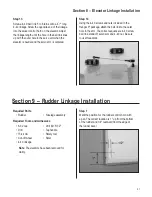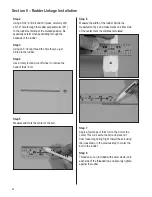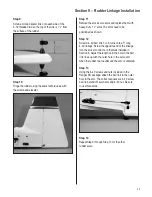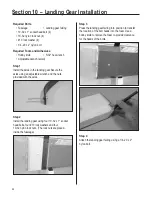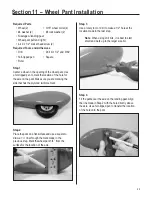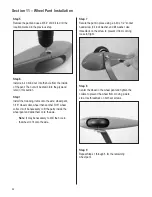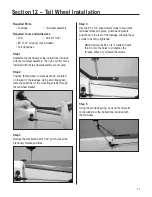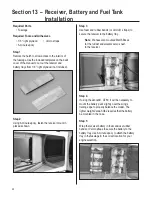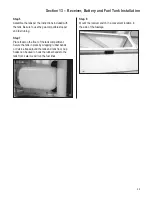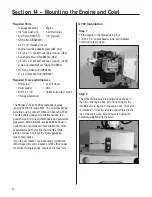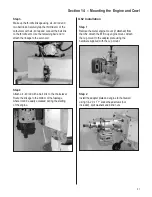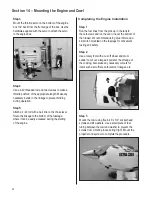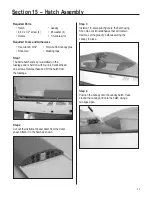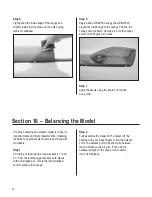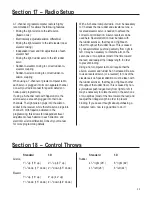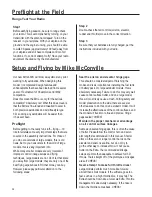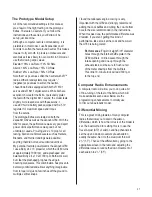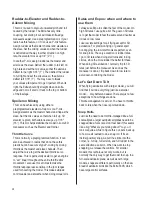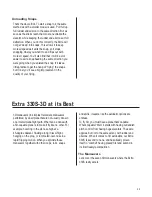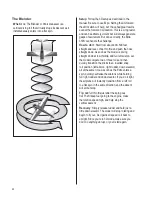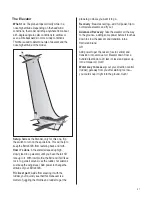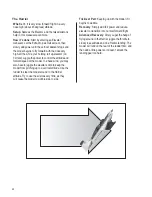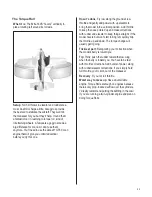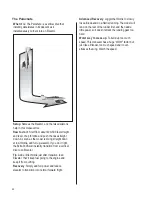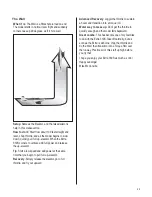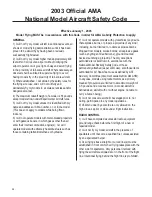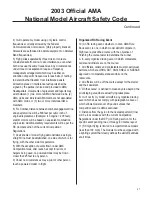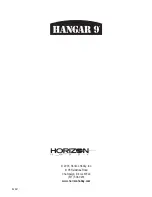
Section 17 – Radio Setup
35
A 7-channel or greater computer radio is highly
recommended. This allows the following features:
• Mixing the right aileron to the left aileron
(flaperon mix)
• Electronically adjustable aileron differential
• Mixing the right elevator to the left elevator (dual
elevator mixing)
• Independent travel and trim adjustments of each
elevator half
• Mixing the right rudder servo to the left rudder
servo
• Rudder-to-elevator mixing to correct rudder-to-
elevator coupling
• Rudder-to-aileron mixing to correct rudder-to-
aileron coupling
When using a 7-channel or greater computer radio,
each servo is plugged into its own separate channel.
Consult your radio manual for specific details on
hookup and programming.
If using a 6-channel radio with flaperon mix, the
aileron servos are each plugged into their own
channels. The right aileron plugs into the aileron
socket in the receiver, while the left aileron plugs into
channel 6. With flaperon activated in the
programming, this allows for independent travel
adjustment of each aileron in each direction and
electronic aileron differential. Consult your manual
for more programming details.
With a 6-channel computer radio, it will be necessary
to Y-harness the two rudder and elevator servos; a
reversed elevator servo is needed to achieve the
correct control direction. A servo reverser can be
used here. Special attention must be taken with
the rudder servos so that they don’t fight each
other throughout the rudder travel. This is caused
by nonsymmetrical pushrod geometry from right to
left. It may be necessary to rotate the arm on the
servo one or two splines (most of the time toward
the rear) and readjust the linkage length in order
to prevent binding.
Using a non-computer radio will require that the
aileron, elevator and rudder be Y-harnessed. Be sure
to use a reversed servo (or a reverser) for one of the
elevator servos. Special attention must be taken with
the rudder servos so that they don’t fight each other
throughout the rudder travel. This is caused by non-
symmetrical pushrod geometry from right to left. It
may be necessary to rotate the arm on the servo one
or two splines (most of the time toward the rear) and
readjust the linkage length in order to prevent
binding. If you’ve ever thought about purchasing a
computer radio, now is a good time to do it!
Section 18 – Control Throws
Standard
3D
Aileron
1
1
/
2
" up (18° up)
2
1
/
2
" up (37° up)
1
1
/
8
" down (17° down) 2
1
/
4
" down (35° down)
Elevator
1
3
/
8
" up (16° up)
4" up (42° up)
1
1
/
2
" down (15° down) 4
1
/
4
" down (44° down)
Standard
3D
Rudder
4
1
/
2
" right (26°)
8" right (44°)
4
1
/
2
" left (26°)
8" left (44°)

